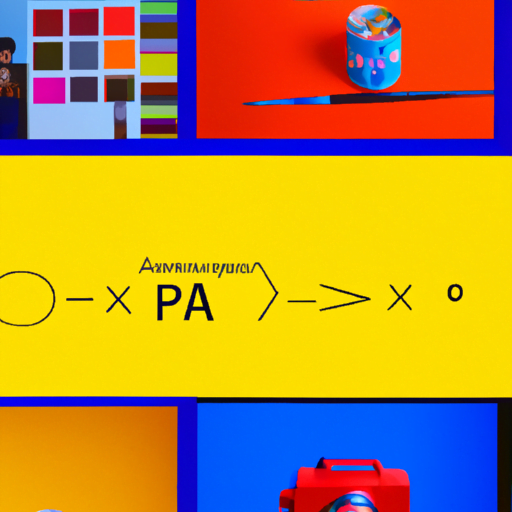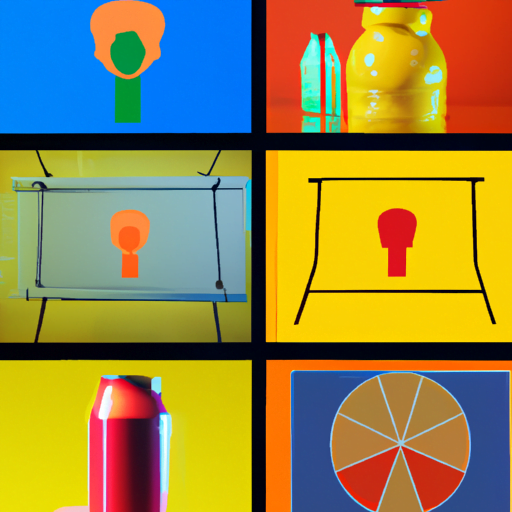
-
Table of Contents
- The Creative Process Deep Dive: From Idea to Execution
- 1. Inspiration: The Spark of Creativity
- 2. Idea Generation: Nurturing the Seed
- 3. Research and Analysis: Building a Foundation
- 4. Concept Development: Giving Shape to Ideas
- 5. Execution: Bringing Ideas to Life
- 6. Reflection and Iteration: Continuous Improvement
- Summary
The Creative Process Deep Dive: From Idea to Execution

Every great work of art, every groundbreaking invention, and every successful business venture starts with an idea. But how does that idea transform into a tangible reality? The answer lies in the creative process. In this article, we will take a deep dive into the creative process, exploring the various stages from idea generation to execution. By understanding this process, you can unlock your own creative potential and bring your ideas to life.
1. Inspiration: The Spark of Creativity
The creative process begins with inspiration. This can come from anywhere – a conversation, a book, a walk in nature, or even a dream. Inspiration is the spark that ignites the creative fire within us. It is the starting point for any creative endeavor.
For example, the famous physicist Albert Einstein was inspired by a thought experiment involving a beam of light. This inspiration led him to develop the theory of relativity, one of the most significant scientific breakthroughs of the 20th century.
2. Idea Generation: Nurturing the Seed
Once you have been inspired, the next step is to generate ideas. This is where brainstorming comes into play. Brainstorming allows you to explore different possibilities and perspectives, pushing the boundaries of your initial inspiration.
During the idea generation phase, it is important to suspend judgment and embrace a mindset of curiosity and exploration. This allows for the emergence of novel and innovative ideas. One popular technique for idea generation is mind mapping, where you visually map out your thoughts and ideas, creating connections and associations.
For instance, Steve Jobs, the co-founder of Apple, famously used brainstorming sessions to generate ideas for new products. These sessions led to the creation of iconic devices such as the iPhone and the iPad.
3. Research and Analysis: Building a Foundation
Once you have a pool of ideas, it is essential to conduct research and analysis to validate and refine them. This involves gathering information, studying existing solutions, and understanding the needs and preferences of your target audience.
Research and analysis provide a solid foundation for your creative project. It helps you identify potential challenges, uncover new opportunities, and make informed decisions. By understanding the existing landscape, you can ensure that your idea stands out and meets the needs of your audience.
For example, before launching the Tesla Model S, Elon Musk and his team extensively researched the electric vehicle market. They analyzed consumer preferences, studied the competition, and conducted thorough market research. This research informed the design and features of the Model S, contributing to its success.
4. Concept Development: Giving Shape to Ideas
With a solid foundation of research and analysis, it is time to develop your concept further. This involves fleshing out your ideas, creating prototypes, and refining your vision. The goal is to transform abstract concepts into tangible forms.
During the concept development phase, it is crucial to iterate and gather feedback. This allows you to refine your concept and make necessary adjustments. Prototyping tools and techniques, such as 3D printing or wireframing, can be invaluable in this stage.
One notable example of concept development is the creation of the Pixar movie “Toy Story.” The initial concept went through multiple iterations, with the team refining the story, characters, and animation techniques. This iterative process ultimately led to the creation of a groundbreaking animated film.
5. Execution: Bringing Ideas to Life
Execution is the stage where your ideas become a reality. It involves turning your concept into a finished product, artwork, or business venture. This stage requires careful planning, organization, and attention to detail.
During the execution phase, it is essential to break down your project into smaller, manageable tasks. This allows you to track progress, allocate resources effectively, and ensure timely completion. Project management tools, such as Gantt charts or Kanban boards, can be helpful in this stage.
For instance, the construction of the Burj Khalifa, the tallest building in the world, required meticulous execution. The project involved thousands of workers, complex engineering, and precise coordination. Through careful planning and execution, the Burj Khalifa became an architectural marvel.
6. Reflection and Iteration: Continuous Improvement
The creative process does not end with execution. Reflection and iteration are crucial for continuous improvement and growth. By reflecting on your work, gathering feedback, and learning from your experiences, you can refine your skills and enhance future projects.
Reflection allows you to identify strengths and weaknesses, celebrate successes, and learn from failures. It provides an opportunity to refine your creative process and develop a deeper understanding of your own creative style.
For example, the renowned artist Pablo Picasso constantly reflected on his work, experimenting with different styles and techniques. This iterative approach allowed him to evolve as an artist and create groundbreaking masterpieces.
Summary
The creative process is a journey from inspiration to execution. It involves multiple stages, each with its own challenges and opportunities. By understanding and embracing this process, you can unlock your creative potential and bring your ideas to life.
Remember:
- Inspiration is the spark that ignites the creative fire.
- Idea generation allows for the exploration of possibilities.
- Research and analysis provide a solid foundation for your project.
- Concept development gives shape to your ideas.
- Execution turns your concept into a tangible reality.
- Reflection and iteration lead to continuous improvement.
Embrace the creative process, nurture your ideas, and let your imagination soar. The world is waiting for your creative contributions.
